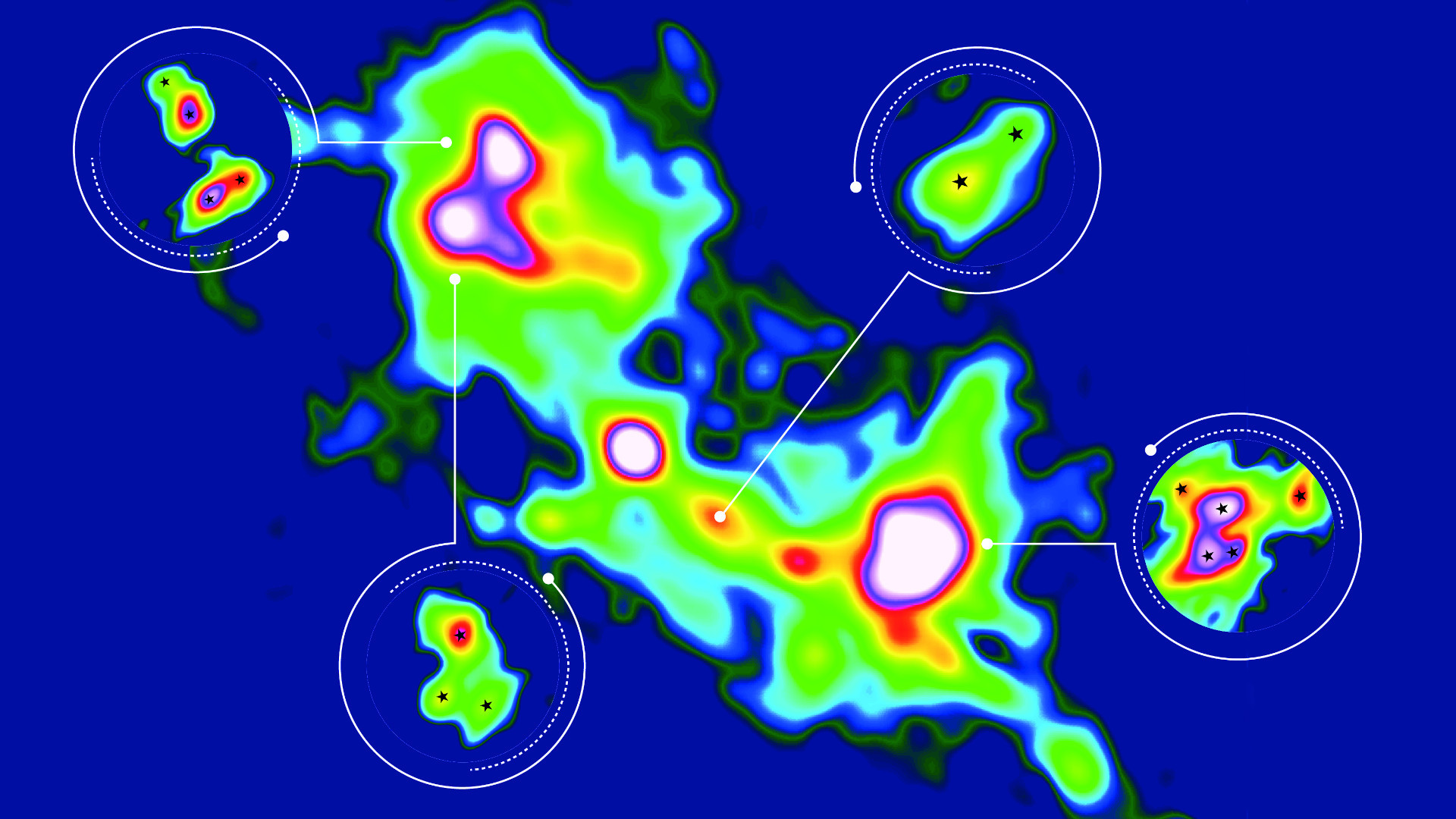
Publication in Nature Astronomy
Stars Born as Multiples
- von Birte Vierjahn
- 15.01.2024
For a long time, research has posited that massive stars are born as twins, triplets, or even higher-order multiples. This has now been substantiated through systematic observations for the first time. The study, with significant contributions from astrophysicists at the UDE, has just been published in Nature Astronomy.
Massive stars, exceeding eight times the mass of our Sun, hold particular interest for astronomers. They give rise to neutron stars and black holes, including the black holes that merge and emit copious amounts of gravitational waves. Additionally, these stars are exceptionally bright, shining up to a million times more than our Sun, making them visible across large distances, so these are the stars we see in other galaxies.
Until now, although there was a good theoretical understanding of star formation under those circumstances, key evidence was missing until the advent of the ALMA Observatory in Chile in the 2010s. The observatory in its present form, with up to 66 radio antennas combined into a single colossal radio telescope, enabled the international group of astronomers to observe thirty promising massive star formation regions between 2016 and 2019.
The analysis, based on data from one observed star formation region (G333.23–0.06), took several years: Each individual observation yields around 800 GB of data, and the images have to be reconstructed from the contributions of the various antennas involved. The result now published is based on the analysis of one of the observed star-forming regions (G333.23-0.06). It was led by the Max Planck Institute for Astronomy (MPIA). The Numerical Astrophysics team at the University of Duisburg-Essen provided the interpretation of the data from a theoretical point of view, in particular to clarify the question of whether the detected objects were born in a so-called circumstellar disk or out of the surrounding cloud.
In region G333.23-0.06 the researchers found the early stages of four binary star systems, one triple system, one quadruple system, and one quintuple system, confirming the role of multiple births in the formation of massive stars. The astronomers are now working on a similar analysis for other massive star formation regions, aiming to elucidate the temporal development details.
Image: False-color image of the massive star formation region G333.23–0.06 from ALMA Observatory data. The smaller images highlight regions where researchers detected multiple protostar systems. The star symbols indicate the locations of each newly forming star. The image covers an area of 0.62 by 0.78 light-years.
Further Information:
https://www.mpia.de/news/science/2024-02-multiplicity-starformation
Prof. Dr. Rolf Kuiper, Computational Astrophysics, +49 203/37 9-1684, rolf.kuiper@uni-due.de
Editors:
Dr. Markus Poessel, MPIA, +49 6221/528-261, poessel@mpia.de
Birte Vierjahn, UDE, +49 203/37 9-2427, birte.vierjahn@uni-due.de
Post-Views: 7569
